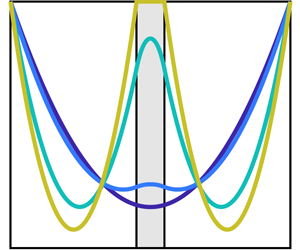Article contents
Multiphase modelling of precipitation-induced membrane formation
Published online by Cambridge University Press: 07 February 2020
Abstract

We formulate a model for the dynamic growth of a membrane developing in a flow as the result of a precipitation reaction, a situation inspired by recent microfluidic experiments. The precipitating solid introduces additional forces on the fluid and eventually forms a membrane that is fixed in the flow due to adhesion with a substrate. A key challenge is that, in general, the location of the immobile membrane is unknown a priori. To model this situation, we use a multiphase framework with fluid and membrane phases; the aqueous chemicals exist as scalar fields that react within the fluid to induce phase change. To verify that the model exhibits desired fluid–structure behaviours, we make simplifying assumptions to obtain a reduced form of the equations that is amenable to exact solution. This analysis demonstrates no-slip behaviour on the developing membrane without requiring fluid–membrane interface boundary conditions. The model has applications towards precipitate reactions where the precipitate greatly affects the surrounding flow, a situation appearing in many laboratory and geophysical contexts including the hydrothermal vent theory for the origin of life. More generally, this model can be used to address fluid–structure interaction problems that feature the dynamic generation of structures.
- Type
- JFM Papers
- Information
- Copyright
- © The Author(s), 2020. Published by Cambridge University Press
References
- 6
- Cited by


